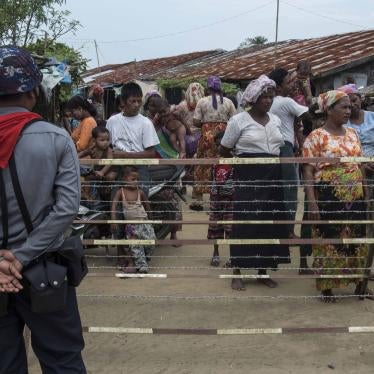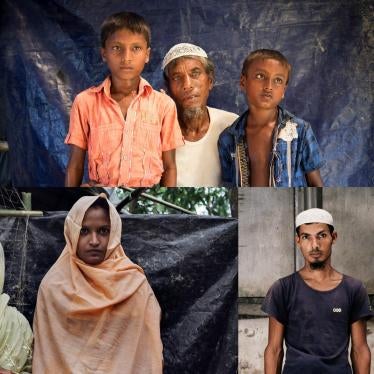Much of the commentary since Suharto’s death on Jan. 27 has focused on his economic legacy. Of late, triumphalist accounts seem to be eclipsing more nuanced assessments, as observers debate whether overall economic growth during his 32-year tenure overshadowed the nepotism and corruption that marred his rule. Suharto’s political and human rights legacy, wrongly pushed to the sidelines, is at least of equal importance in assessing his record and the challenges facing Indonesia today.
Democracy was already in retreat during the turbulent last years of Sukarno immediately preceding Suharto’s ascension. In 1965-66, Indonesia was in upheaval. While Suharto brought stability, he did so at enormous cost, orchestrating pogroms that killed hundreds of thousands of suspected communists and sympathizers and unleashed broader violence.
Suharto then proceeded to reshape government in ways that destroyed all hopes of democracy for the entire duration of his rule. While Indonesia is impossibly diverse in ethnic terms and notoriously difficult to govern, Suharto’s approach was to eviscerate the rule of law and make the military his prime instrument of social control. With censorship integral to his rule, he left precious little space even for discussion of his policies. Indonesia has spent much of the past ten years recovering from the consequences.
For the most part, Suharto’s political innovations—such as his amalgamation of societal “functional groups” into an ostensibly apolitical ruling “party” that he himself controlled (the old Golkar)—did not survive his rule. More generally, government institutions languished and their performance plummeted during his tenure. As the Economist noted after his death, government institutions suffered from advanced rot and it is little wonder that the “mafia state” he created could not withstand the 1997 Asia economic crisis.
Suharto’s government did important work in expanding essential social services, such as health and education. But even in such areas caveats are in order. The undeniable benefits of the expansion of schools, for example, should be counterbalanced with consideration of the consequences of his crude imposition of Pancasila ideology and the fear of innovation that sucked the life out of much of the education system.
Under Suharto, institutions essential to democracy were not allowed to grow or flex their muscles and, as a result, atrophied. Sham elections and show trials were all that were allowed, and people knew it.
Indonesia had relatively free parliamentary elections in 1955; it wasn’t until 1999, with Suharto gone, that the country again saw anything comparable. The judiciary was thoroughly politicized under Suharto, its professionalism severely undercut by its blatantly subservient role. Although there was some slow opening toward the end, genuinely independent civil society groups were not tolerated for most of Suharto’s rule; fear of surveillance haunted the press, the campus, and the public square.
The one institution that unambiguously flourished under Suharto was the military, with its political and economic prominence and an organizational structure paralleling the civilian bureaucracy down to the village level. While the military’s political influence is slowly receding today, it remains economically and socially entrenched. Again, Indonesia is grappling with the consequences today, with the fight still on to end the military’s formal and informal economic role and establish genuine civilian supremacy.
Since Suharto was forced from power by street protests in 1998, there has been significant progress in some of these areas: political parties and the press have blossomed, and society is far more vibrant than it was before. One notable area of failure, however, continues to be the independence and vigor of the prosecutorial and judicial systems.
The legal system today would be far stronger if it addressed the institutionalized violence that Suharto made central to government. Together with the security forces and intelligence apparatus, the leadership of which he carefully groomed and then rotated out at strategic moments, he simply crushed political opponents.
Suharto’s “New Order” government turned violence on and off like a spigot, using it to snuff out or discredit popular opposition and public trends he and other officials didn’t like. These included, to take some of the better known examples: demands for far-reaching political reform in the early 1970s, advocacy of independence in East Timor following the Portuguese withdrawal in 1975, the rising assertiveness of criminal elements (“preman”) in Central Java in the early 1980s, calls for cultural autonomy in Papua (Irian Jaya) in the mid-1980s, and rising political dissatisfaction in Aceh in the 1990s. Suharto’s world was one of constant perceived threats that required a heavy-handed response. Often, as in Papua, Aceh, and East Timor, the heavy-handedness contributed to resentments that fueled decades-long rebellions.
But Suharto didn’t kill and repress all by himself. Many who aided him remain in power or have continuing influence today. Even though Suharto is gone, there is a need to put surviving collaborators on trial and let them explain their deeds—and Suharto’s role. Accountability through professional and independent investigations into Suharto-era abuses would not only provide justice for victims, it would be the best shot in the arm for institutions such as the courts that still have a long way to go to fulfill their roles in society. Demonstrating to the public that police, prosecutors, and judges are able to hew to principle even in the face of the continued influence of some Suharto-era military officials and a public understandably focused on economic survival would mark profound progress in Indonesia. To date, there has been almost no progress whatsoever on key cases.
Justice, accountability, and an end to impunity are not just about the past. The clearest indication of the continued hold of Suharto-era thinking and patterns is the still unresolved murder of Munir, Indonesia’s most prominent human rights activist and a savvy political analyst. Munir was crudely assassinated with a massive dose of arsenic while en route from Jakarta for studies in Holland in 2004, seven years after Suharto was forced out. From early on in the investigation, there has been substantial evidence the killing was part of a larger conspiracy involving the National Intelligence Agency but investigators have dragged their feet.
In a positive development, in late January 2008, the Supreme Court sentenced Pollycarpus Budihari Priyanto, an off-duty Garuda Airlines co-pilot with links to the agency, to a 20-year jail term. Pollycarpus was found to have delivered Munir a poisoned drink while in a Singapore airport transit lounge. But while there is growing evidence that the plan to kill Munir may have been launched at high levels within the agency months before the actual killing, investigators still have not named a single intelligence agency employee as a suspect.
This is sobering. Munir was a hero of the movement that ousted Suharto. His work in 1998 on behalf of “disappeared” student activists whose protests had become a lightning rod for demands for change made him one of the main faces of opposition in the months before and after Suharto’s ouster on May 21, 1998. From that time until his death, Munir was a public figure, internationally acclaimed and nationally recognized for his courage and willingness to stand up to the military and intelligence establishment.
Similarly striking is the lack of prosecutions of security forces for ongoing violations in Papua. Despite dozens of official statements of commitment to taking a new approach in Papua, and positive developments on several fronts, justice has noticeably lagged—to the point where one wonders if it is even part of the equation. Recent Human Rights Watch investigations suggest that special police units, taking over many tasks previously performed by the military, continue to engage in abuses in remote highland regions, but enjoy the same impunity enjoyed by the military under Suharto. The dynamic that poisoned the political climate in Papua under Suharto has not changed in this important respect.Beyond the Munir case and conditions in Papua today are the literally hundreds of thousands of other victims of Suharto-era violence. Still unaddressed are the mass killings of 1965-66, security force impunity for endemic violations in counterinsurgency operations in Aceh and East Timor, past crimes in Papua, killings in Lampung, Tanjung Priok, and other prominent cases.
This too is Suharto’s legacy. The fact that Suharto is now gone should be a spur to delve more deeply into such cases rather than to bury and forget them. Doing so would serve victims of past abuse but also send a signal that the rule of law matters, prosecutors will not let cases languish, and the judiciary has found its feet—in sum, that Indonesia’s fledgling democracy is building a foundation that will last.
Joseph Saunders is Human Rights Watch’s deputy program director. He has lived and worked in Indonesia.






